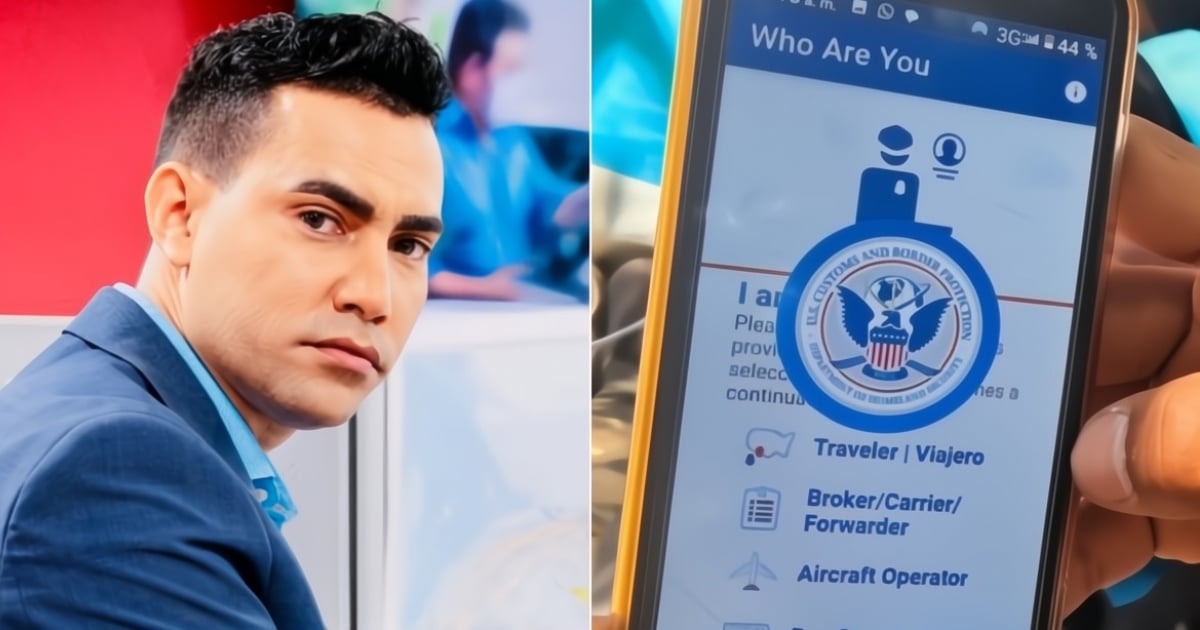A Cuban national who entered the United States in 2024 through the CBP One program with an I-94 form is worried that returning to Cuba might jeopardize his application for U.S. residency and permanently close the doors to America for him. The migrant shared his situation on social media, explaining that he was supposed to apply for residency in August but left the U.S. on April 12 due to "current situations" without informing authorities. "I just boarded a plane and went back to Cuba," he mentioned.
In his message, he voiced concerns about the impact on his immigration status should the immigration measures implemented by former President Donald Trump be reversed in the future. Journalist Mario J. Pentón responded emphatically, asserting that the Cuban migrant had already lost his "chance at a new life."
"You cannot come back to this country because: 1- you violated the conditions of the parole granted to you; 2- you returned to the country you were supposedly fleeing from, which was the reason you were allowed into the United States. Good luck with your new life in Cuba. You will need it," Pentón wrote on his profile.
The situation has sparked a debate on social media, dividing users between those who understand the reasons for the return to the island and those who support Trump's immigration policies.
In February 2025, the U.S. government announced that the CBP One application, previously used to identify undocumented migrants on domestic flights, would be restricted to self-deportation processes or transfers between detention centers. The Transportation Security Administration (TSA) confirmed that migrants could only access airport security checks if their travel was for leaving the country.
U.S. Immigration Policies and Their Impact
This measure was presented by Homeland Security Secretary Kristi Noem as a reversal of Biden-era immigration policies. Subsequently, on April 8, the Department of Homeland Security (DHS) began issuing notifications to cancel the parole permits of migrants who entered the U.S. via CBP One. These communications urged beneficiaries to leave the country immediately, warning that failure to comply would result in deportation and loss of benefits such as work authorization.
Authorities did not specify the exact number of individuals affected. These actions align with the new administration's objectives to bolster national security and restrict the use of parole as a legal entry mechanism. The cancellation of these permits marks a significant shift from the previous administration, which used CBP One as a key tool for managing legal appointments at the southern border.
From his first day in office, Donald Trump ordered a halt to new appointment assignments through this app, leaving thousands stranded in Mexico. This policy, coupled with the elimination of humanitarian parole, forms one of the cornerstones of the current immigration crackdown, directly impacting communities such as the Cuban one.
Understanding CBP One and Its Implications
What is CBP One?
CBP One is an application used by U.S. Customs and Border Protection to facilitate the processing of migrants, mainly for identification and managing legal appointments.
Why was the Cuban migrant concerned about his residency application?
The Cuban migrant was concerned that his return to Cuba without notifying U.S. authorities could affect his immigration status and residency application, especially under the stricter immigration policies.
How have the U.S. immigration policies changed recently?
Recent changes include restricting the use of CBP One to self-deportation processes and canceling parole permits, aligning with the Trump administration's focus on national security and limiting legal entry mechanisms.
